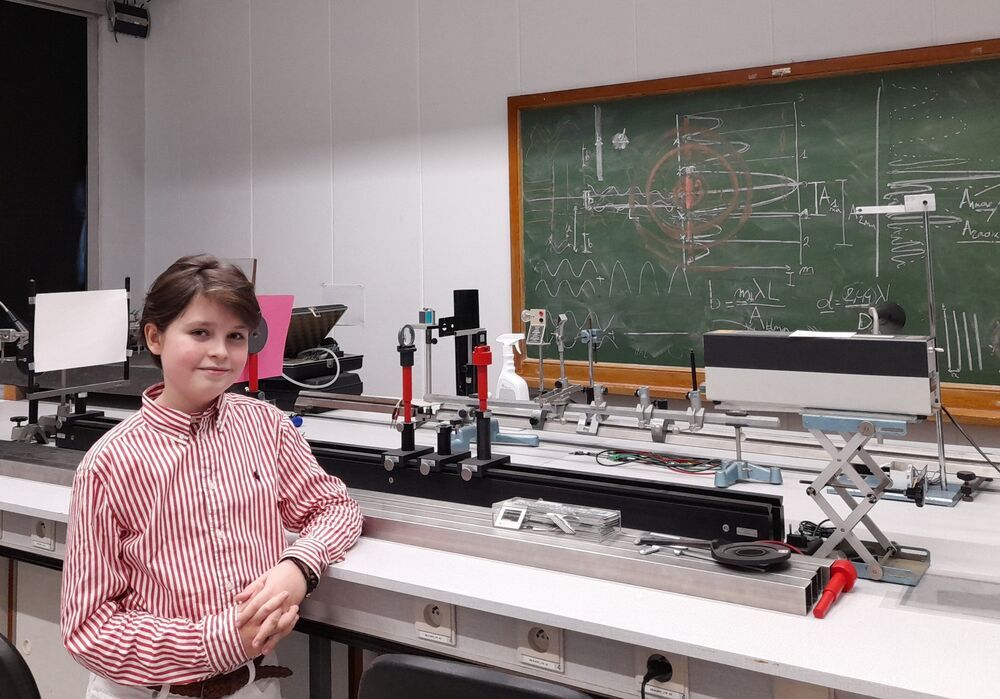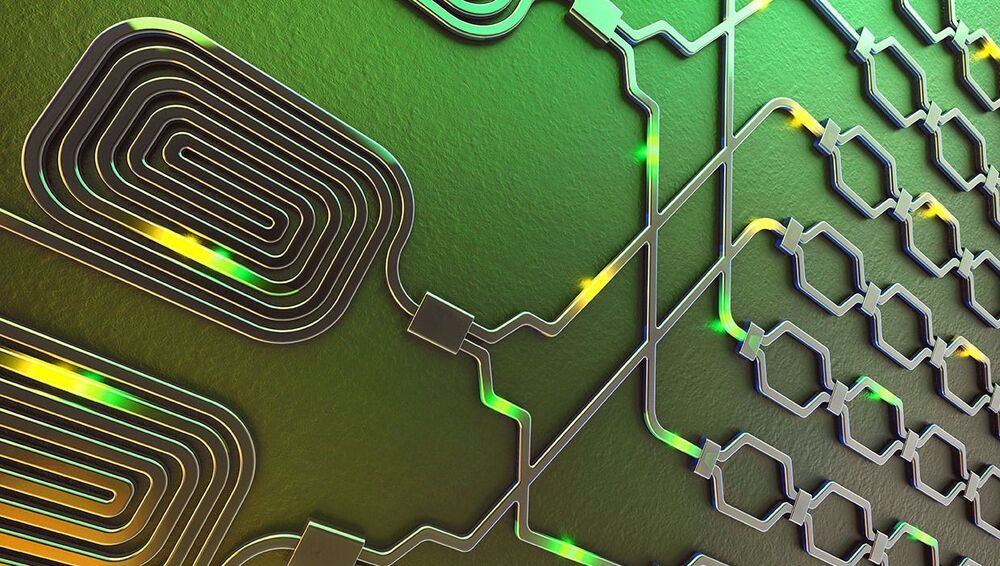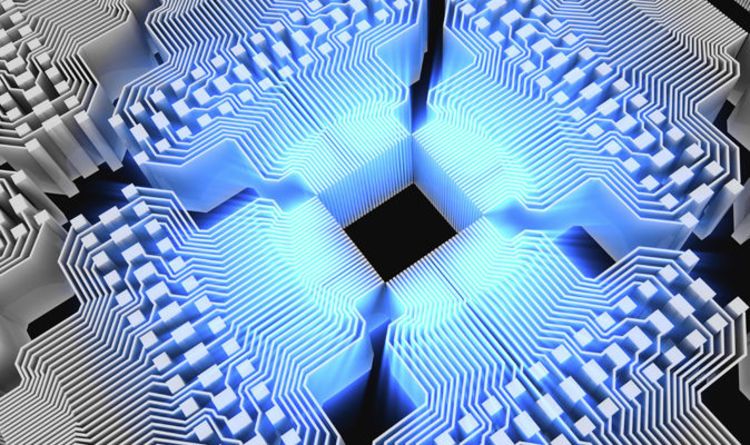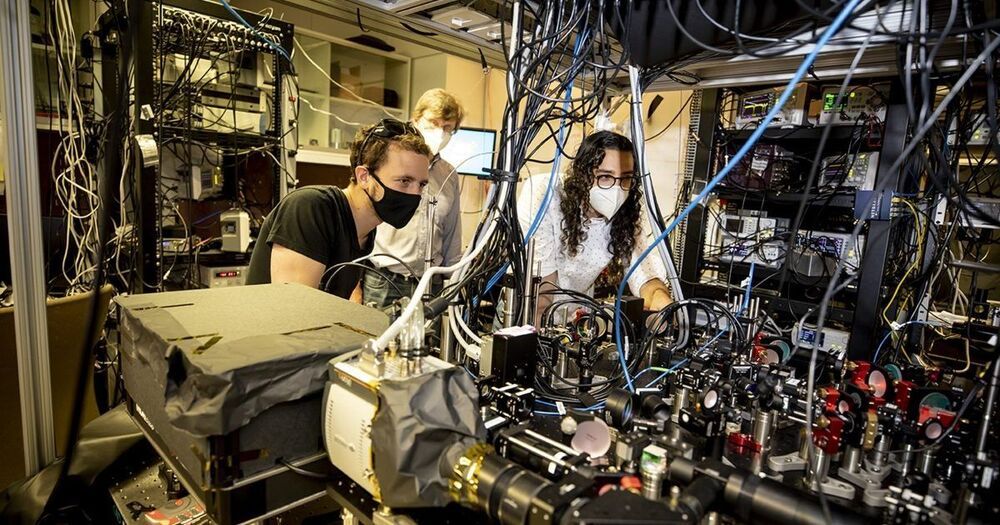Circa 2020
According to the many-worlds interpretation of quantum mechanics, the universe is constantly dividing and taking you with it – so would you recognise your other selves if you met them?


Researchers from Skoltech and their colleagues from the UK have managed to create a stable giant vortex in interacting polariton condensates, addressing a known challenge in quantized fluid dynamics. The findings open possibilities in creating uniquely structured coherent light sources and exploring many-body physics under unique extreme conditions. The paper was published in the journal Nature Communications.
In fluid dynamics, a vortex is a region where a fluid revolves around a point (2D) or a line (3D); you’ve clearly seen one in your sink or may have felt one in the form of turbulence while flying. The quantum world also has vortices: the flow of a quantum fluid can create a zone where the particles revolve persistently around some point. The prototypical signature of such quantum vortices is their singular phase at the core of the vortex.
Skoltech Professors Natalia Berloff and Pavlos Lagoudakis and colleagues studied vortices created by polaritons – odd hybrid quantum particles that are half-light (photon) and half-matter (electrons) – forming a quantum fluid under the right conditions. They were looking for a way to create vortices in these polariton fluids with high values of angular momentum (i.e., getting them to rotate fast). These vortices, also known as giant vortices, are generally very hard to obtain as they tend to break apart into many smaller vortices with low angular momentum in other systems.

As someone with a passionate interest in longevity, transhumanism and biological immortality — I am naturally both excited and optimistic that medical technology will continue to advance in my lifetime — hopefully to the point where humanity has cured or at least greatly mitigated the signs & symptoms of most diseases as well as disabilities, radically expanded human biological lifespan regardless of age, and created a more dignified existence for all as a result of rapid breakthroughs in robotics, AI, automation, nanotechnology, 3D printing and biotechnology — which I hope in turn will largely eradicate poverty, disease, food & shelter insecurity, natural resource scarcity, environmental degradation and income inequality. I know that some of my likeminded friends are far more skeptical that we will ever see outright cures or significant mitigations for major diseases and disabilities — much less radical life extension or perhaps biological immortality in human beings — which are widely available on a commercial basis. They cite their belief that pharmaceutical giants, a plethora of not for profit organizations (i.e., American Cancer Society), and many other allegedly “self-interested parties” supposedly allied with government regulatory bodies — apparently do not want to see diseases or disabilities cured or lifespan significantly extended — EVER — as this would prevent them from earning untold sums selling treatments and supports for such things on a regular ongoing basis (i.e., chemo drugs for cancer, statins for cardiovascular disease, inhaled/oral steroids for lung disease, renal replacement therapy for kidney disease, mobile supports for spinal cord injuries, ect.) They believe that too much money would be at stake, too many jobs on the line and the entire “pharma-medical-academic industrial complex” supposedly at great risk, if actual cures or significant mitigations ever saw the light of day. Some of these friends even cite their belief that fully autonomous, accident proof, self-driving cars will most likely never occur — as it would supposed put the entire auto insurance industry at existential risk as well as deprive law enforcement agencies of a key source of reliable revenue (issuing speeding tickets) This one makes me giggle! 🤭 My friends also believe that radical life extension in human beings — much less biological immortality — would apparently upset the proverbial apple cart — where the “powers that be” are concerned — in terms of everything from the highly lucrative profits which are derived from pharmaceutical sales, old age homes, life and health insurance plans, personal financial services and all of the sales of key products and services associated with the aging process — to macroeconomic considerations such as the long term viability of government entitlement programmes. They believe that government regulatory authorities allegedly working at the behest of the aforementioned self-interested parties will always seek to delay, disrupt or even derail ANY and ALL significant progress into cures/mitigations for disease/disabilities, radical human life extension and/or human biological immortality. Apparently, new biotech start ups which do advance the aforementioned things are allegedly “always aggressively bought out by monopoly capital — with their cures and advances indefinitely suppressed” I personally tend to be more on the positive and optimistic side where these things are concerned — but perhaps these rather pessimistic arguments do have some validity — minus the implied conspiracy theory aspect. Do you think human beings will ever be “allowed” to truly be free from illnesses and disabilities? Will we ever be “permitted” to radically expand our lifespans or even become biologically immortal at some point? Please discuss.
I have already taken a few courses for a master’s in physics at the University of Antwerp and I want to complete it there. In a bachelor’s degree you get a basis of knowledge in physics and quantum physics, but it gets more detailed in a master’s.
The main reason I chose to study physics is because my end goal is to achieve immortality. One of the areas that is important in the study of immortality is physics, but as of yet, there is no mapped out path to achieve it.
I am interested in immortality because my grandparents suffer from heart disease. I want to help them and I want to help other kids so they don’t have to lose their grandparents. You could look at immortality as a very big puzzle. We have a lot of pieces of the puzzle, which are different studies and research, and it’s possible that combining the knowledge from those studies will develop new insights and ideas. Something I am interested in is artificial organs; I would like to be able to replace as many parts of the body as possible with artificial organs. I plan to do a lot of studying, gather a lot of knowledge and then all the pieces will hopefully fit in together and the puzzle of immortality may be solved.


Team develops simulator with 256 qubits, largest of its kind ever created.
A team of physicists from the Harvard-MIT Center for Ultracold Atoms and other universities has developed a special type of quantum computer known as a programmable quantum simulator capable of operating with 256 quantum bits, or “qubits.”
The system marks a major step toward building large-scale quantum machines that could be used to shed light on a host of complex quantum processes and eventually help bring about real-world breakthroughs in material science, communication technologies, finance, and many other fields, overcoming research hurdles that are beyond the capabilities of even the fastest supercomputers today. Qubits are the fundamental building blocks on which quantum computers run and the source of their massive processing power.

Circa 2020 o.o…
Google’s Sycamore used to be the world’s fastest quantum computer on the planet, with 54 cubits of quantum computational power. Google declared Quantum Supremacy with Sycamore in October 2019 by running a calculation in 200s that would have taken the world’s fastest supercomputer 10000 years the execute. (in case you’re wondering; Quantum Supremacy is when a quantum computer can complete a task that no supercomputer could achieve.)
The research team at the University of Science and Technology of China ran a similar simulated comparison to its quantum calculation. China’s top quantum computer, dubbed Jiuzhang, completed a calculation in 3 minutes that would have taken TaihuLight, the country’s fastest supercomputer, and third fastest in the world, 2 billion years to complete.
Google and China did not run the same calculations on their systems, so a direct comparison is impossible, but the research team estimates that its quantum computer is 100 trillion times faster than Googles.

Scientists at KAIST have fabricated a laser system that generates highly interactive quantum particles at room temperature. Their findings, published in the journal Nature Photonics, could lead to a single microcavity laser system that requires lower threshold energy as its energy loss increases.
The system, developed by KAIST physicist Yong-Hoon Cho and colleagues, involves shining light through a single hexagonal-shaped microcavity treated with a loss-modulated silicon nitride substrate. The system design leads to the generation of a polariton laser at room temperature, which is exciting because this usually requires cryogenic temperatures.
The researchers found another unique and counter-intuitive feature of this design. Normally, energy is lost during laser operation. But in this system, as energy loss increased, the amount of energy needed to induce lasing decreased. Exploiting this phenomenon could lead to the development of high efficiency, low threshold lasers for future quantum optical devices.

Circa 2014
Physicists have verified a key prediction of Albert Einstein’s special theory of relativity with unprecedented accuracy. Experiments at a particle accelerator in Germany confirm that time moves slower for a moving clock than for a stationary one.
The work is the most stringent test yet of this ‘time-dilation’ effect, which Einstein predicted. One of the consequences of this effect is that a person travelling in a high-speed rocket would age more slowly than people back on Earth.
Few scientists doubt that Einstein was right. But the mathematics describing the time-dilation effect are “fundamental to all physical theories”, says Thomas Udem, a physicist at the Max Planck Institute for Quantum Optics in Garching, Germany, who was not involved in the research. “It is of utmost importance to verify it with the best possible accuracy.”

Quantum computers could make modern day Macs look like the very first Commodore computer.
Initial tests on Google and NASA’s quantum computing system D-Wave showed that it was a staggering one hundred million times faster than a traditional desktop.
Hartmut Nevan, director of engineering at Google, claimed: “What a D-Wave does in a second would take a conventional computer 10000 years to do.”
